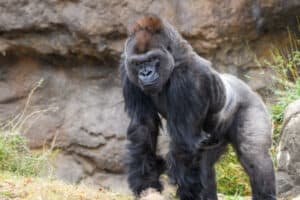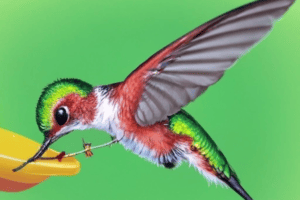Eagles have been known for war and power since Babylonian times. Literature in Greek and Roman mentioned eagles as strong animals. The likeliness of eagles has also been found in the ruins, coins, literature and medals of both Roman and Greek.
Eagle is a bird of prey having mighty wings and strong eyesight. The body structure is similar to the vulture. They build nests in inaccessible places where they keep their eggs for 6 to 8 weeks. They survive on live prey and locate their victims from a great distance.
There are different types of eagles found all over the world. The life expectancy varies depending upon the different factors.
Table of Contents
How long do Eagles Live?
Most birds you see daily in your backyards and street have an average life of two to five years. Some species of birds may even survive to the age of 50 years, but eagles live much longer than other species.
Eagles have the most extended lifespan of 50 years among their species, but a good lifestyle is required to reach that age. Bald eagles have an average lifespan of 20-25 years. Eagles don’t have any natural predators, and they have a versatile food chain which helps them have a longer life span than other birds.
The main threat to eagles is their species if they attack them. This problem is quite common in deep forests, reducing their life expectancy.

Different Types of Eagles and Their Lifespan
There is no easy answer to the question of how long do eagles live, so here we have the list of different types of eagles and their lifespans.
Serpent Eagles
Serpent eagles are the most common eagles that are found in Africa and Asia. They mostly hunt reptiles such as snakes, lizards, crocodiles etc. Serpent eagles have very sharp beaks with clear vision. The thing that makes them distant among their species is their big size and sharp nature.
Serpent eagles have a lifespan of an average of 50 years. They can extend their life up to 5-10 years if they live in a safe neighborhood away from danger and other eagles.
Hawk Eagles
Hawk eagles get their name because they resemble hawks. They have a large population in tropical areas such as America, Asia etc. Due to the crest near their head, you can recognize them easily. They have medium size as compared to other eagles.
They have a much shorter lifespan as compared to other eagles. They can live up to 12 years but those in captivity can live longer than 15 years.
Bald Eagles
Bald eagles are the most famous type of eagle found in many parts of North America, Canada, and Mexico. The bald eagle is the national bird of the United States and usually builds its house around forests, mountains, rivers etc. Bald eagles have white feathers on their head and neck, which make them easy to recognize.
Bald eagles have a life span of almost 25 years. The oldest living bald eagle lived to the average age of 46 years. In captivity, they can live longer than 46 years which makes them among the species having a longer lifespan.
Golden Eagles
Golden eagles are mostly found in parts of Europe, Africa and North America. They have also present in different agricultural areas, lands, forests etc. They also make their nests on the top of mountains and cliffs, giving them a better vision of finding their prey.
Eagles have brown and golden colors around their head which make them easy to recognize. They can weigh over 6-7 kgs having a wings span of over 2-3 months.
Golden eagles can have a lifespan of 30 years living in the wild and their age can extend up to 60 years if held in captivity.
Black and Chestnut Eagles

Black and chestnut eagles are mostly found in South American regions around Argentina and Venezuela. They make their nests in the jungles of the Andes and forests. They have dark color plumage having black stripes as their name indicates. Black and chestnut eagles are among endangered species and on the verge of being extinct.
The main reason behind their extinction is deforestation due to human activities which are reducing space for their nesting. Black and chestnut eagles have an average lifespan of 18 years.
Crowned Eagles
Crowned eagles belong to sub-Saharan regions and in Africa. They are native to the dense forests in these areas. They hunt and live there and are considered one of the most dangerous predators in Africa. They have smaller in size compared to other eagles. They have dark red plumage spots on them. Their shorter size works to their advantage for hunting food when they prey on mammals.
The lifespan of crowned eagles is about 14 years. They can live longer if they are held captive in a healthy environment.
Harpy Eagles
Harpy eagles are mostly found in northern Argentina and Central American jungle areas. These eagles are among the giant creatures in the eagle family. They have white and grey color plumage and are famous for their flying skills.
The bird’s lifespan has an average life of about 25-35 years. They build their nests with sticks and branches at least 90 feet from the ground in trees like Kapok trees.
Spanish Imperial Eagle
The Spanish imperial eagle is the most popular eagle found in coastal areas and mountains. Spanish eagles have large sizes and wings that can reach over 2 meters. The Spanish imperial eagle is close to becoming extinct and is considered an endangered bird species.
The lifespan of eagles is around 17 years, but they can live up to 40 years in captivity. The Eastern imperial eagle, another specie of eagle, can live up to 56 years.
Average Lifecycle of Eagles

From golden eagle to bald eagle their life cycles remain the same. All eagles go through the same phases during their lifetimes.
1. Egg
Eagles build their nest in trees or on the top of cliffs. Females lay 2-4 eggs and then sit on the nest to keep them warm for 40 days. Depending upon the environment, this sitting period can last 50 days. During this, the male eagle hunt and feed the female while she sits on the eggs.
2. Hatch Period
Once the eggs hatch, baby eagles depend upon their parents to remain safe. The hatchlings will develop faster and learn to hunt and feed by themselves.
3. Leaving the nest
Young eagles continue to live in their mother’s nest for 10 weeks. This period allows young on to develop and grow in size to start hunting food. Young eagles take time to leave the nest for a long time after birth.
A study has been conducted on the computer simulation model of the lifecycle of bald eagles. The lifecycle of eagles depends upon many parameters such as human population, environment, mortality rate and others.
4. Juvenile Period
Once eagles were old enough to leave, they entered the juvenile period. Eagles have high mortality rates in the juvenile period of their life. Once they enter this phase they can move to a new place and build a nest there. They migrate to find better food sources in other regions.
5. Adult Period
Once the five years have passed, eagles enter into the adult phase. At this point, eagles search for partners for mating. They establish Long-life mating and build large nests to keep their babies there.
After becoming adults now eagles can live up to 50 years. Different factors such as geography, climate, and the human impacts on nature influence their lifespan.
Interesting Facts about Eagles
Many species of eagle birds are found globally but here are some interesting facts about eagles. Eagles are known to be very fierce and powerful among any bird species.
- The eyesight of eagles is more than eight times stronger than that of humans.
- They have pretty large eyes that can occupy most of their head area.
- They can differentiate between different colors and can detect UV light.
- Few eagles can hunt goats, foxes, and deer beside reptiles.
- Eagles are pretty strong and they can carry very heavy loads up to 7 kgs.
- They can locate their prey from a great distance with their sharp eyes.
Wrapping Up:
Eagles are one of the popular bird species having a longer lifespan. Different types of eagles living in different geographical regions vary in their average life but an adult eagle living in a healthy environment can live longer than other birds on this planet.
Read Also: What animals are eagles scared of?
Research Article: https://www.sciencedirect.com/science/article/pii/089571779290071R





